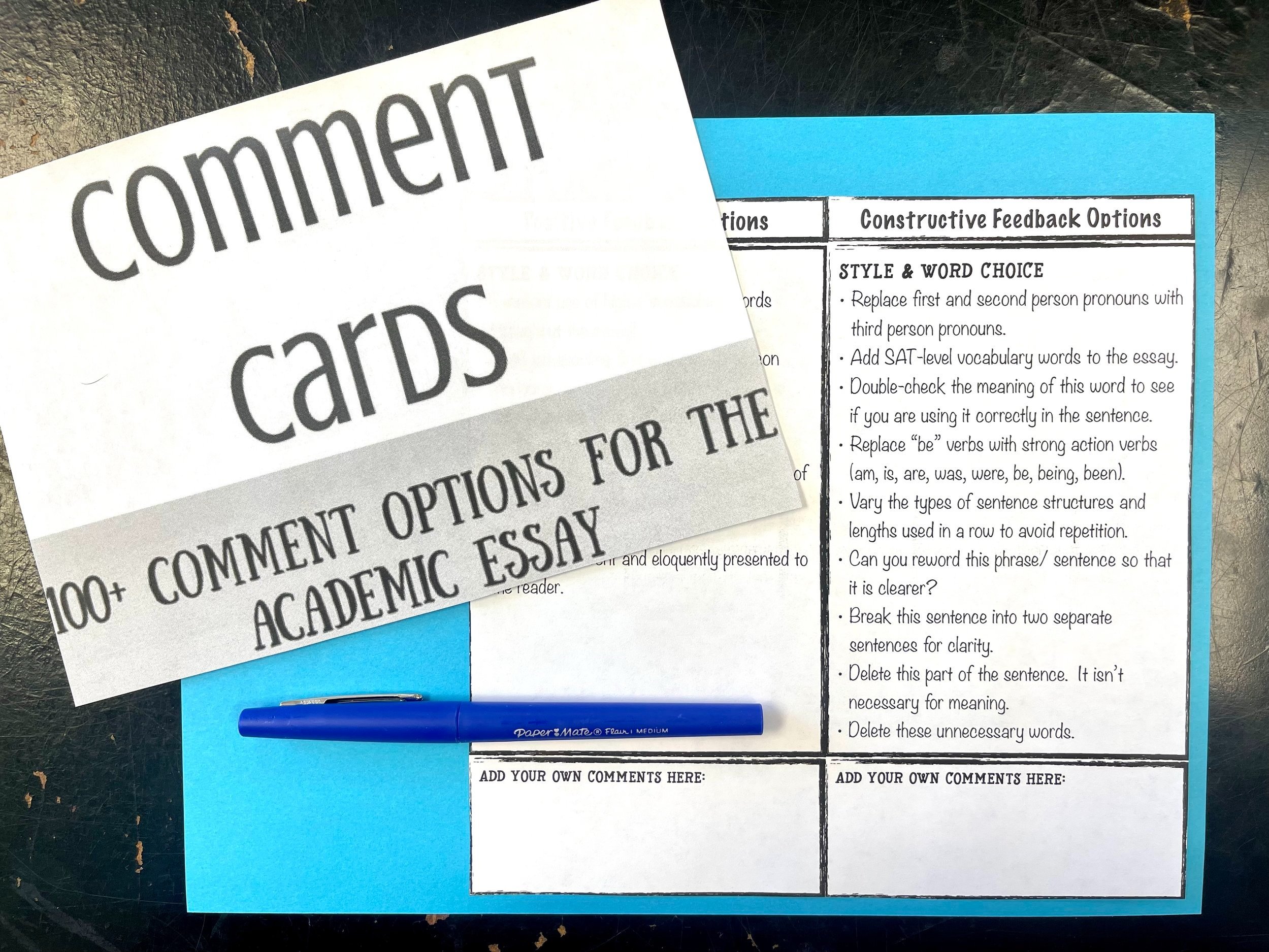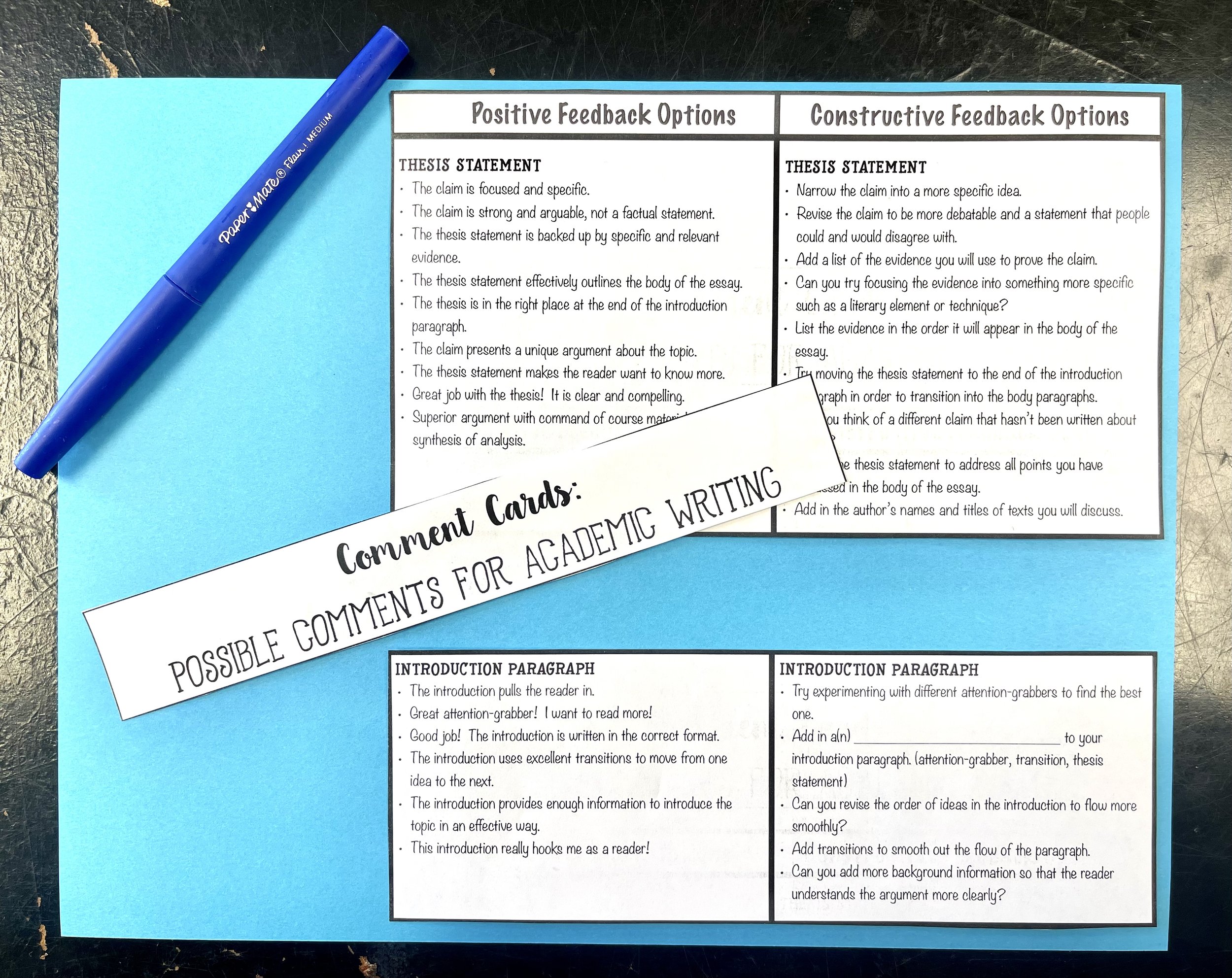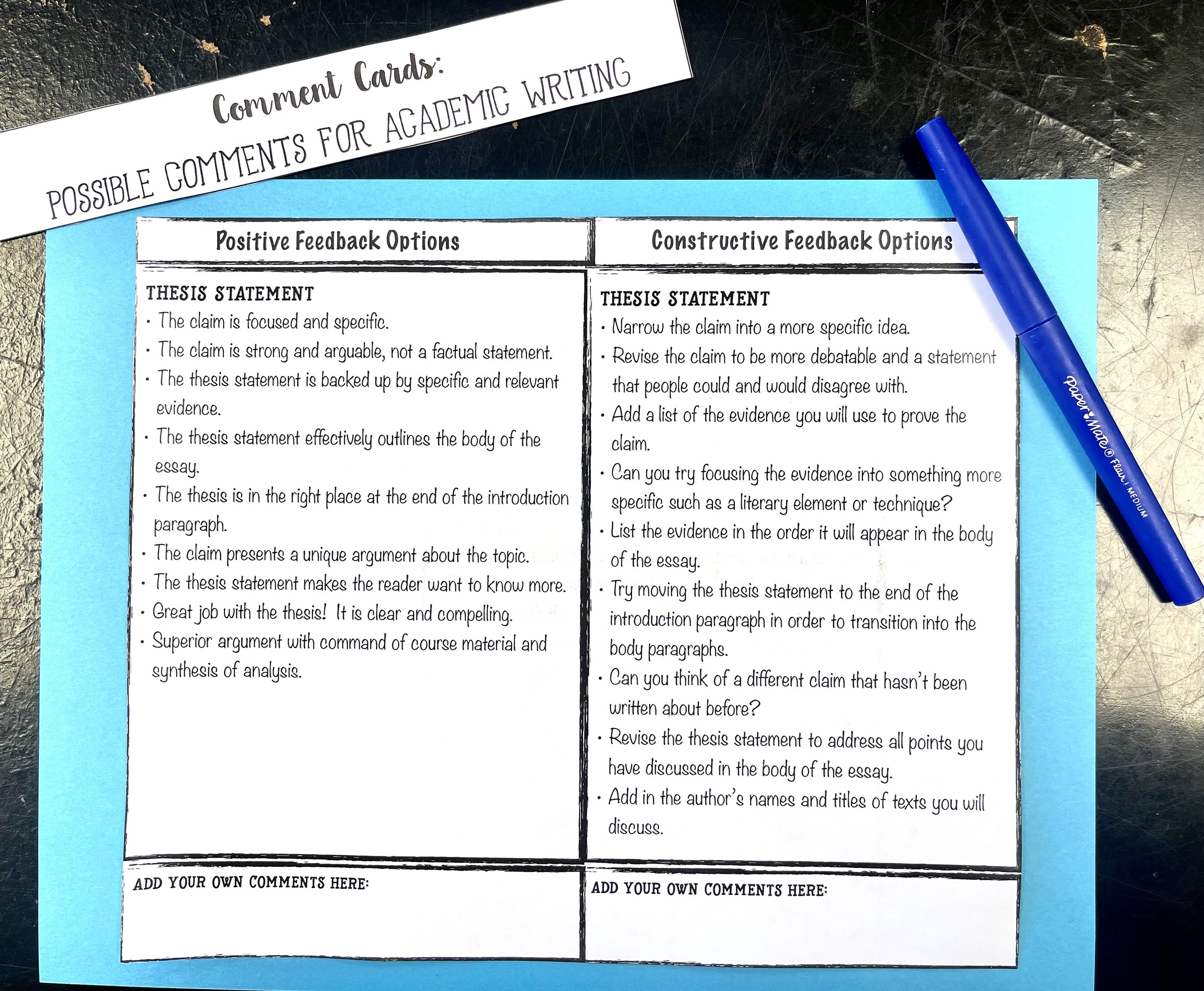The Collaborative Essay: Good or Bad?
The collaborative, or “group” essay concept, is a staple in business schools and college curriculums. It’s a strategy that on the surface may seem to encourage group participation in the writing process, and there are certainly cases where this happens. However, it is a strategy that comes with both pros and cons in the secondary English Language Arts classroom.
The Pros
Collaborative essays can be beneficial in some cases, as they may allow multiple authors to bring a variety of perspectives and expertise to the topic. Collaboration can help authors to come up with fresh and innovative ideas and can allow the different authors to provide insight and expertise on different aspects of the essay.
In an idealistic sense, collaborative writing groups create a built-in group of tutors who can each share their expertise as they work to create a group essay. Additionally, collaborative essays can often be written more quickly than a single-authored essay, as the authors can divide up the topics and tasks.
Here are some other pros of a collaborative essay:
Increased Creativity: Collaborative essays can benefit from the input of multiple authors, allowing for a greater range of perspectives and ideas.
Improved Writing Skills: Collaborative essays can help improve writing skills in multiple authors, as they must work together to craft the essay.
Enhanced Communication: Working together on a collaborative essay can help foster communication and collaboration skills among its authors.
Greater Understanding: Working together on an essay can help create a greater understanding between authors and can help them learn from each other.
Increased Productivity: Working together on an essay can speed up the process of writing and can help authors stay focused and productive.
The Cons
Despite the pros of the collaborative essay, it also has its drawbacks. A collaborative essay may be less effective, as the different authors may not be in agreement on the main points or the overall argument.
In some groups, one or two people may do all of the work when other group members do not contribute to the project. This can create an unfair grading situation when students receive grades they do not earn. And with secondary students, they sometimes feel the pressure not to “tattle” on their friends or classmates and opt to complete all of the work anyway without informing the teacher of the situation— all out of fear of being ostracized by their classmates. This is a major drawback.
Other cons of the collaborative essay include:
Lack of Accountability: Collaborating on an essay can lead to a lack of accountability. Without a single author, it can be difficult to make sure that the essay is written to a high standard and that all of the work is completed.
Communication Issues: Collaborating on an essay can be difficult if the group has communication issues. If the group members are not able to communicate effectively, it can be hard to come to a consensus on how the essay should be written.
Time Management: Collaborating on an essay can take more time than if it were written by a single person. This can be due to different views and opinions about the essay, as well as having to coordinate everyone's efforts.
Differences in Writing Styles: When working with multiple authors, the essay may end up with a disjointed feel due to the differences in writing styles. This can be difficult to overcome and may require a lot of editing in order to make the essay flow better.
How to Make it Work
So, given the pros and cons of the collaborative essay, how can we as writing teachers make the collaborative essay work for our students?
Provide students with a clear purpose and structure for the essay. Break the essay into manageable sections and provide clear instructions on how the students should work together to complete each section.
Demonstrate the importance of collaboration. Make sure students understand how their individual perspectives can contribute to a collective product.
Guide the collaboration process. Provide students with questions or prompts to help them work together and stay focused on the task at hand.
Emphasize good communication. Encourage students to discuss their ideas and be open to constructive feedback from their peers.
Give students time to plan. Allow them to come up with a plan for working together before diving into the essay.
Assign roles. Assign each student a specific role, such as researcher, writer, or editor, to ensure that everyone plays an active part in the essay.
Set a timeline. Give students a deadline and check in with them periodically to make sure they are on track.
Make sure everyone is heard. Make sure all voices are heard and that everyone has a chance to contribute to the essay.
Give feedback. Give students feedback on their progress and what they can do to improve.
Check contribution. Have students include a writeup of each group member’s contribution to the essay or project. Meet with groups for a discussion of how they worked together and how it went. This should reveal any issues with inequality of workload.
Overall, I think it’s important to check in often with student groups if and when you decide to assign a collaborative essay. This can help to avoid any pitfalls with the group essay. Guiding students through the difficulties and obstacles of the process is part of their learning process and will help them practice the tools they need to be effective and productive when working with a team.
Have you ever assigned a collaborative, group essay? How did it go? What advice would you give to other teachers before they try it? We’d love to hear from you in the comments!
In the meantime, check out these other posts!
Related Blog Posts
Writing is Recursive, Not Linear: Free Task Cards to Reflect Writing as a Process
5 Alternatives to the Traditional Essay
A Philosophy for Assessing Writing: Aim for Improvement, not Perfection
Related Resource
About the Author
Meredith is the founder and creator of Bespoke ELA and TeachWriting.org. She has taught high school English for 15+ years in Dallas, Chicago, and New York City and holds a M.A. in Literature from Northwestern University. She has always had a connection to the written word-- through songwriting, screenplay writing, and essay writing-- and she enjoys the process of teaching students how to express their ideas. Meredith enjoys life with her sweet daughter and Yorkie.





